Nuthatches: Small Birds with Upside-Down Feeding Behavior
Nuthatches are fascinating little birds with a unique behavior that sets them apart from their avian counterparts. Known for their upside-down feeding style, these small yet remarkable creatures captivate bird enthusiasts worldwide. With species such as the White-breasted Nuthatch, Red-breasted Nuthatch, Brown-headed Nuthatch, and Pygmy Nuthatch, each showcasing their own distinct characteristics, nuthatches have become a subject of curiosity and admiration. Equipped with long beaks, short tails, and strong feet adorned with long claws for gripping tree bark, these birds gracefully maneuver their way across tree trunks in search of an array of delicacies, including insects, beetles, caterpillars, and spiders. Found commonly in forests and woods, nuthatches often join mixed feeding flocks with other bird species, creating a vibrant and dynamic ecosystem. To lure these delightful creatures to your feeder, offering a variety of treats such as black oil sunflower seeds, nuts, suet, and peanut butter suet can prove irresistible. Opting for feeders like tube feeders, caged feeders, suet feeders, and peanut feeders is recommended to optimize their visits. While nuthatches primarily sustain themselves with invertebrates during the nesting season in spring and summer, they are more likely to visit feeders in the fall and winter, making it the perfect time to welcome these extraordinary birds into your backyard.
Physical Characteristics
Beak
Nuthatches are easily recognizable by their long, slender beaks. The shape of their beak allows them to easily pry open crevices in tree bark to find insects and other small prey. Their beaks are slightly curved, which helps them extract insects from the bark. The upper mandible is usually longer than the lower one, giving their beak a pointed appearance.
Tail
One physical characteristic that sets nuthatches apart is their short tail. Their tails are shorter in proportion to their body size compared to other bird species. This short tail gives them better maneuverability as they cling to tree trunks and branches. It also helps them maintain balance while moving quickly along the bark.
Feet
Nuthatches have strong feet with long, sharp claws that are specially adapted for climbing trees. These claws enable them to grip onto surfaces like tree trunks and branches. This adaptation allows them to move effortlessly in any direction, including upside-down. Their agile feet and strong grip make it easier for them to search for food on vertical surfaces.
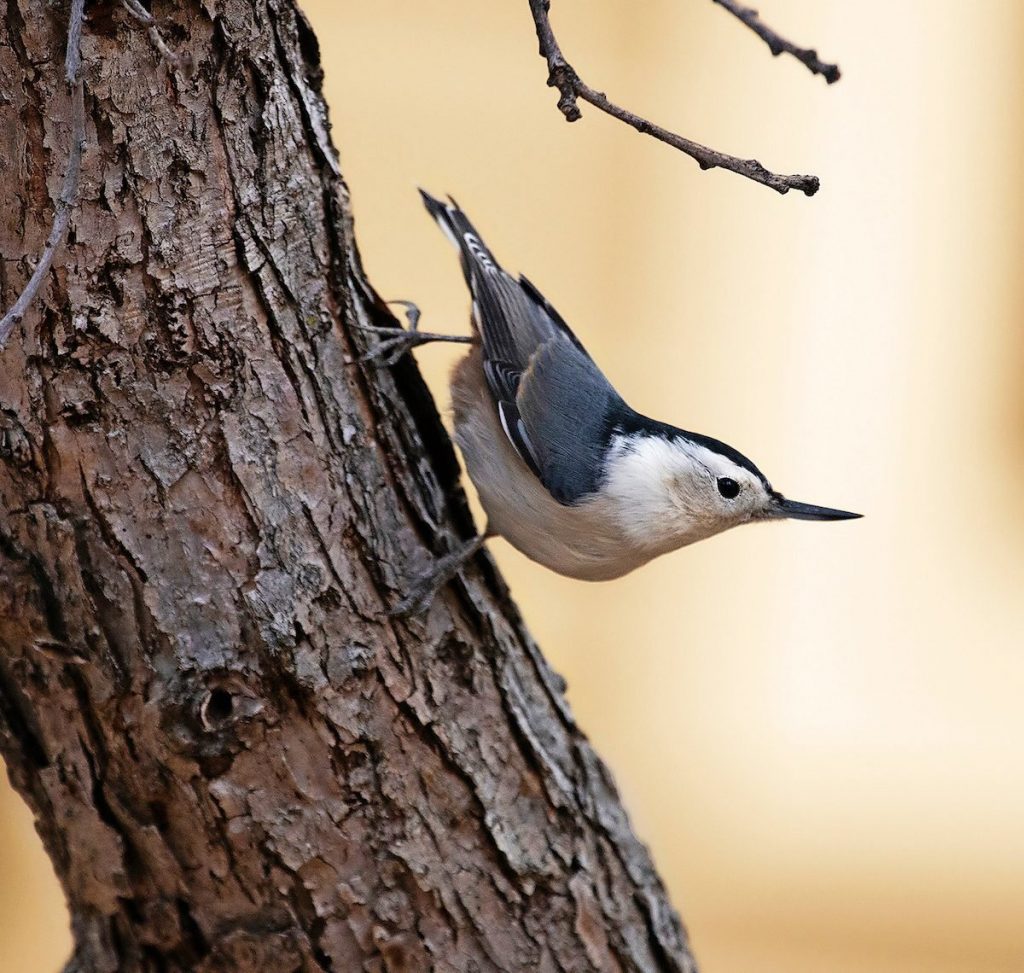
Feeding Behavior
Tree Bark Foraging
One of the most fascinating aspects of nuthatches is their unique feeding behavior. These birds are known for their ability to cling onto tree trunks and probe the bark for insects and other small prey. They move in a distinct, jerky manner, hopping along the tree trunk with their head facing down. Their sharp beaks and strong neck muscles allow them to tap and hammer on the bark to uncover hidden insects.
Diet
Nuthatches have a varied diet that primarily consists of insects, beetles, caterpillars, and spiders. They also eat nuts, seeds, and acorns. During the breeding season, they may consume more invertebrates to provide protein for their growing chicks. Their foraging technique on tree bark allows them to access hidden insects that are often overlooked by other bird species.
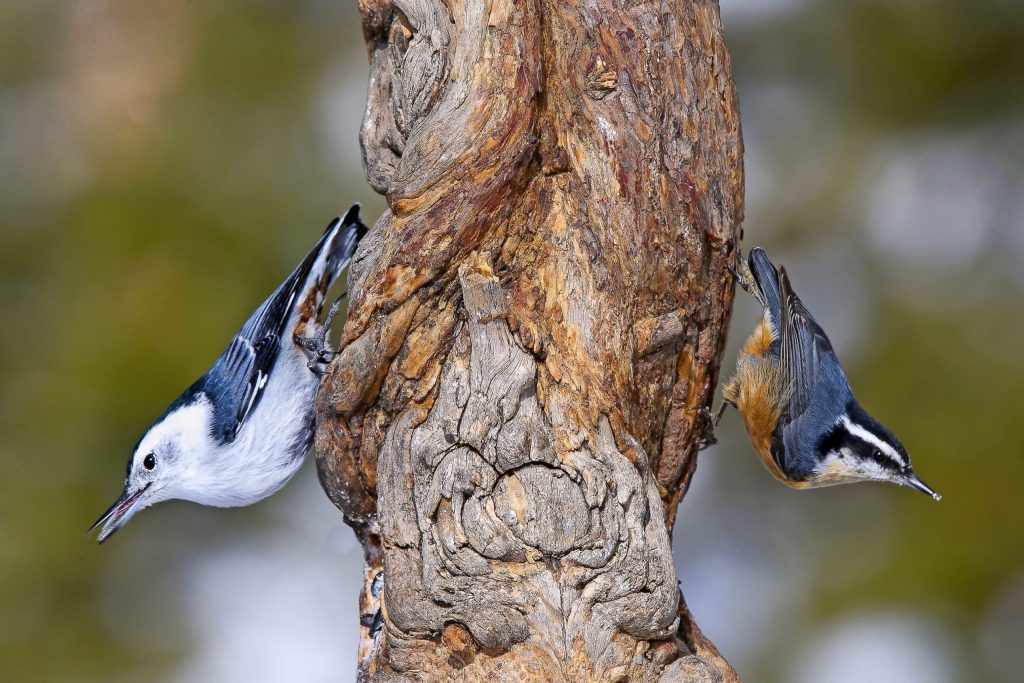
Habitat and Distribution
Forests and Woods
Nuthatches are commonly found in forests and woodlands across their range. They prefer areas with a dense tree canopy where they can find ample resources for foraging. They are adaptable to various types of forests, including deciduous, coniferous, and mixed forests. These birds are highly territorial and will defend their nest sites fiercely against intruders.
Mixed Feeding Flocks
Nuthatches often form mixed feeding flocks with other bird species, especially during the non-breeding season. These flocks consist of different species that cooperate in finding food and providing additional protection against predators. Being part of a mixed flock allows nuthatches to access more food resources and share information about potential dangers in their environment.
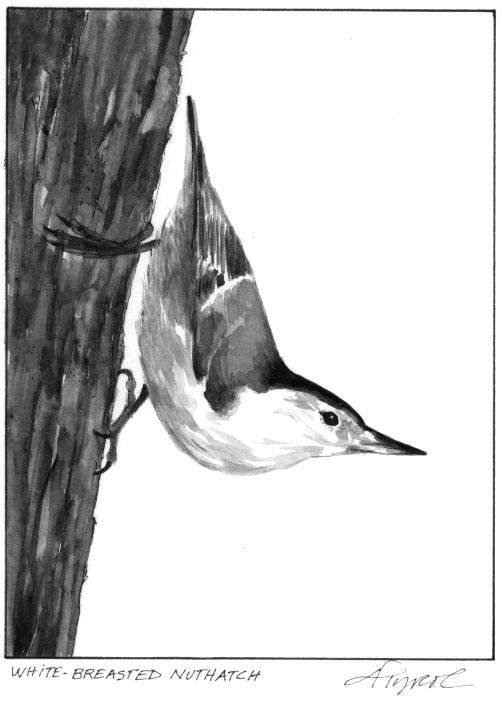
Attracting Nuthatches to Feeders
Food
If you want to attract nuthatches to your backyard feeder, offering a variety of foods will increase your chances of success. Nuthatches have a preference for black oil sunflower seeds, which are high in fat and provide a valuable source of energy. They also enjoy nuts, such as peanuts and almonds, as well as suet and peanut butter suet.
Recommended Feeders
To cater to the feeding habits of nuthatches, there are specific feeders you can use to attract them. Tube feeders filled with sunflower seeds or nuts are a great option, as nuthatches can easily cling to them and extract the food. Caged feeders also work well, as they allow nuthatches to access the food while keeping larger birds away. Suet feeders and peanut feeders are also effective in attracting these birds.
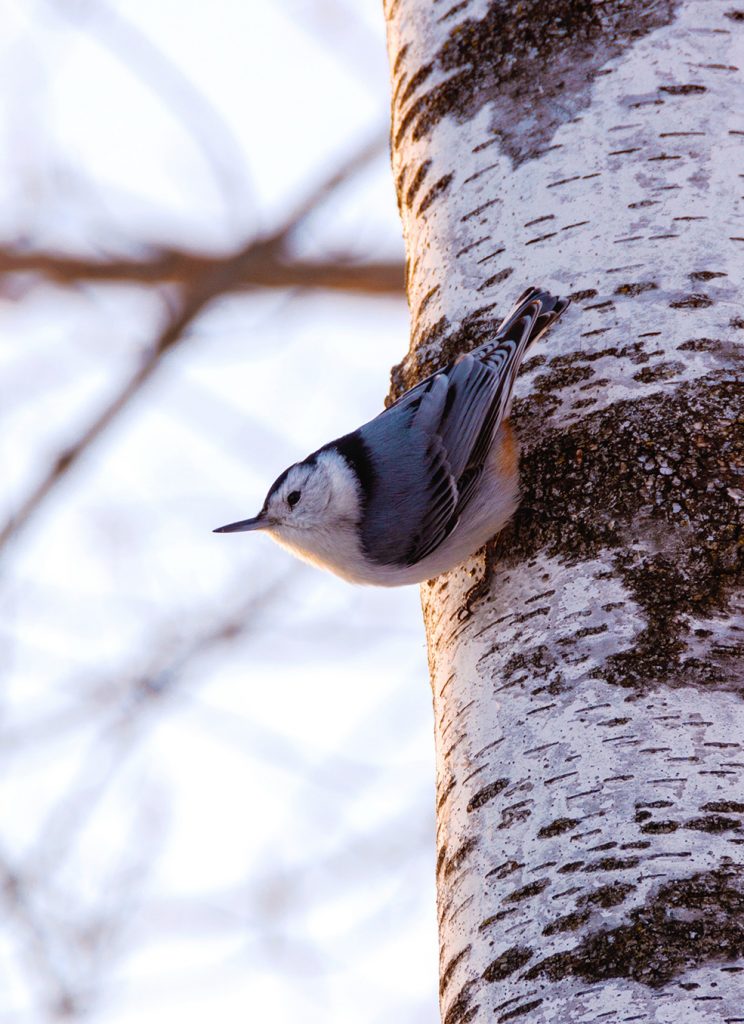
Seasonal Patterns
Feeding Habits in Spring and Summer
During the nesting season in spring and summer, nuthatches shift their feeding habits to primarily focus on invertebrates. They actively search for insects, caterpillars, and spiders to feed their growing chicks. At this time, they are less likely to visit feeders as their dietary needs are primarily met through foraging in the natural habitat.
Feeding Habits in Fall and Winter
As the seasons change and the availability of insects decreases, nuthatches become more reliant on supplemental food sources. In the fall and winter, they are more likely to visit feeders in search of the high-energy foods mentioned earlier. Providing a consistent source of food during these colder months can attract nuthatches and provide them with the essential nutrients they need to survive.
In conclusion, nuthatches are fascinating birds with unique physical characteristics and feeding behaviors. Their long beaks, short tails, and strong feet allow them to navigate tree bark with ease and feed on insects and other small prey. They can be found in forests and woodlands, often in mixed feeding flocks with other bird species. To attract these birds to your feeders, offering a variety of foods such as sunflower seeds, nuts, suet, and peanut butter suet is recommended. Understanding their seasonal feeding patterns can also help you provide the appropriate food sources during different times of the year. Observing nuthatches in your backyard can be a delightful experience and a wonderful opportunity to appreciate the beauty and adaptability of these small, yet remarkable birds.
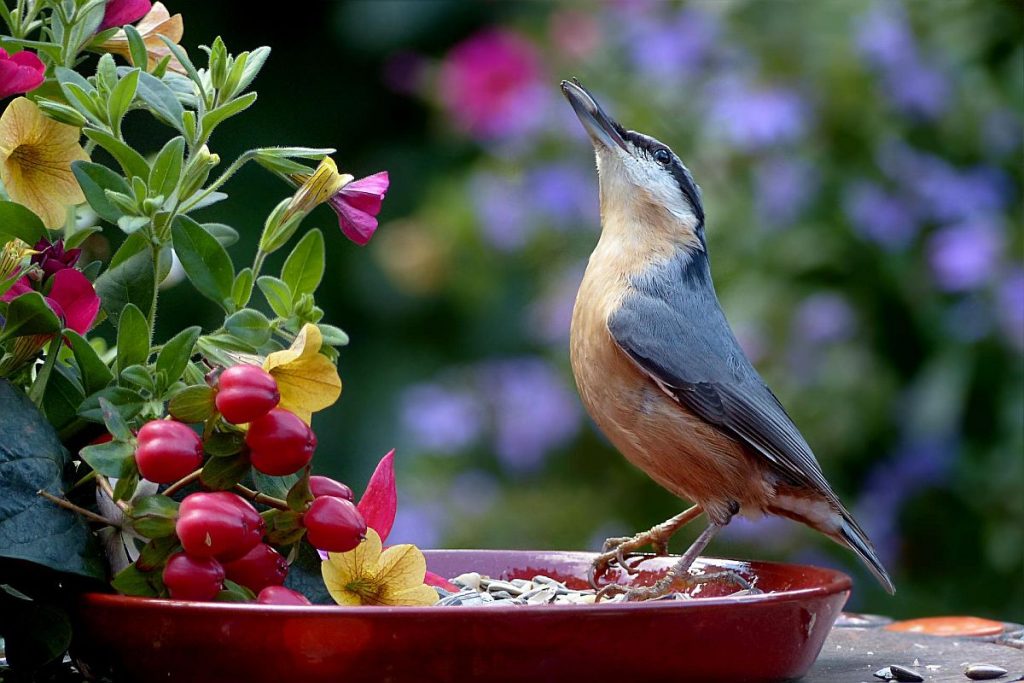
Leave a Reply